IoT-Based Discomfort Monitoring and a Precise Point Positioning Technique System for Smart Wheelchairs
Abstract
:1. Introduction
2. Autonomous Smart Wheelchairs
2.1. System Requirements
2.2. Internet of Things (IoT)
3. Design Concept for a Smart Wheelchair
- The display and control systems require an eDP+ touch-screen panel and a computer board running Windows 10 (a minicomputer), respectively.
- Two 10-inch-diameter castor wheels with front-wheel drive.
- Three sets of levers control the six-inch-diameter rear-wheel drive castors.
- The chair can recline to 60 degrees and move in four directions (forward, back, left, and right).
- Three different levels of movement speed adjustment.
- Developing control systems for various devices through the sensor system displayed on the touch screen.
- C Sharp (C#) programming languages were used to write the control unit programs.
- The sensor system measures the car’s distance from the obstacles in front of it; if it is less than one meter, it will cause the wheelchair to stop automatically.
- While the automobile travels, eight sets of lights are visible, along with a liquid crystal display (LCD) panel that displays the battery’s status.
- Battery charging outlets and a charger with a minimum voltage and current of 24 volts and 10 amps, respectively.
- A four-ball, 250-watt, 24-volt direct current (DC) motor with an integrated reduction gear.
- The DC motor driving unit of the metal-oxide-semiconductor field-effect transistor (MOSFET) hybrid type is at least 80 amps in size.
3.1. System Design and Implementation
3.2. Anto and Firebase Platform
4. Experimental Results
4.1. Electric-Powered Wheelchair Speed Test
4.2. Electric Powered Wheelchair in an Incline Test
4.3. Displacement Distance Test
4.4. GPS Tracking Test
5. Discussion
6. Conclusions
Author Contributions
Funding
Data Availability Statement
Acknowledgments
Conflicts of Interest
References
- Patel, B.; Shah, P. Operating system support, protocol stack with key concerns and testbed facilities for IoT: A case study perspective. J. King Saud Univ.-Comput. Inf. Sci. 2022, 34, 5420–5434. [Google Scholar] [CrossRef]
- Chang, S.Y.; Morse, S.S.; Murugiah, K.M.; Wong, W.T.; Ming, C.L. Mobile health applications for pediatric care: Review and comparison. Ther. Innov. Regul. Sci. 2018, 52, 383–391. [Google Scholar]
- Mora, L.; Deakin, M.; Reid, A. Strategic principles for smart city development: A multiple case study analysis of European best practices. Technol. Forecast. Soc. Change 2018, 142, 70–97. [Google Scholar] [CrossRef]
- Javaid, M.; Khan, I.H. Internet of Things (IoT) enabled healthcare helps to take the challenges of COVID-19 Pandemic. J. Oral Biol. Craniofac. Res. 2021, 11, 209–214. [Google Scholar] [CrossRef] [PubMed]
- Kumar, S.; Tiwari, P.; Zymbler, M. Internet of Things is a revolutionary approach for future technology enhancement: A review. J. Big Data 2019, 6, 111. [Google Scholar] [CrossRef] [Green Version]
- Sajid, M.U.A.; Mahmud, M.F.; Rahaman, I.; Shahriar, S.; Rahman, M.N. Design of An Intelligent Wheelchair for Handicap People Conducting by Body Movement. In Proceedings of the 11th International Conference on Computing, Communication and Networking Technologies (ICCCNT), Kharagpur, India, 1–3 July 2020. [Google Scholar]
- Kaneda, K.; Kamohara, M.; Shiku, O.; Kobayashi, T. Wheelchair Accessibility Evaluation with Deep Learning Using a Sensing Acceleration Data-Based Spectrogram. In Proceedings of the IEEE 9th Global Conference on Consumer Electronics (GCCE), Kobe, Japan, 13–16 October 2020. [Google Scholar]
- Thakare, S.; Bhagat, P.H. Arduino-Based Smart Irrigation Using Sensors and ESP8266 WiFi Module. In Proceedings of the Second International Conference on Intelligent Computing and Control Systems (ICICCS), Madurai, India, 14–15 June 2018. [Google Scholar]
- Asman, P.; Jiang, T.; Ozturk, M.; Reyna, J.; Ince, N.F. A Low-Cost Microcontroller Based Stimulation System to Study Sensory Processing. In Proceedings of the 9th International IEEE/EMBS Conference on Neural Engineering (NER), San Francisco, CA, USA, 20–23 March 2019. [Google Scholar]
- Datta, N.; Malik, A.; Agarwal, M.; Jhunjhunwala, A. Real Time Tracking and Alert System for Laptop through Imple-mentation of GPS, GSM, Motion Sensor and Cloud Services for Antitheft Purposes. In Proceedings of the 4th International Conference on Internet of Things: Smart Innovation and Usages (IoT-SIU), Ghaziabad, India, 18–19 April 2019. [Google Scholar]
- Kwak, Y.; Bae, J.; Kim, H.; Ahn, J.-W.; Lee, D.-H. A design and control of one-wheel type hybrid wheelchair. In Proceedings of the IEEE Transportation Electrification Conference and Expo, Asia-Pacific (ITEC Asia-Pacific), Harbin, China, 7–10 August 2017. [Google Scholar]
- Noman, A.T.; Khan, M.S.; Islam, M.E.; Rashid, H. A New Design Approach for Gesture Controlled Smart Wheelchair Utilizing Microcontroller. In Proceedings of the International Conference on Innovations in Science, Engineering and Technology (ICISET), Chittagong, Bangladesh, 27–28 October 2019. [Google Scholar]
- Demetriou, G.A. Robotic Wheel Chairs. In Proceedings of the 9th International Conference on Information Technology and Applications in Biomedicine, Larnaka, Cyprus, 4–7 November 2019. [Google Scholar]
- Cui, J.; Cui, L.; Huang, Z.; Li, X.; Han, F. IoT Wheelchair Control System Based on Multi-Mode Sensing and Human-Machine Interaction. Micromachines 2022, 13, 1108. [Google Scholar] [CrossRef] [PubMed]
- Bhat, S.A.; Ahmad, M.; Elalfy, H.; Abdul, M.; Shah, S. A Novel Framework for Modelling Wheelchairs under the Realm of Internet-of-Things. Int. J. Adv. Comput. Sci. Appl. 2021, 12, 745–751. [Google Scholar] [CrossRef]
- Manoj, G.; Sanjay, H.S.; Dinesh, P.A.; Manoj, M.; Kumar, K.P. Design and Development of a Collapsible Wheel for Wheelchair-Based Applications Using Aluminum 6061 Material. Int. Appl. Mech. 2022, 58, 236–242. [Google Scholar] [CrossRef]
- Yang, T.; Ma, Y.; Zhang, P. Artificial potential field-based anti-saturation positioning obstacle avoidance control for wheeled robots. Nonlinear Dyn. 2022, 1–14. [Google Scholar] [CrossRef]
- Noaman, M.; Khan, M.S.; Abrar, M.F.; Ali, S.; Alvi, A.; Saleem, M.A. Challenges in Integration of Heterogeneous Internet of Things. Sci. Program. 2022, 2022, 8626882. [Google Scholar] [CrossRef]
- Roy, C.; Misra, S.; Maiti, J.; Nait-Abdesselam, F. Diff-Price: Differential Pricing Scheme for Provisioning Safety-as-a-Service in Vehicular IoT Applications. IEEE Trans. Veh. Technol. 2022, 71, 8189–8198. [Google Scholar] [CrossRef]
- Hossain, M.A.; Khondakar, M.F.K.; Sarowar, M.H.; Qureshi, M.J.U. Design and Implementation of an Autonomous Wheelchair. In Proceedings of the 4th International Conference on Electrical Information and Communication Technology (EICT), Khulna, Bangladesh, 20–22 December 2019. [Google Scholar]
- Luo, M.; Zhang, D.; Hu, Q.; Li, X.; Qing, Y. Innovative Design of an Intelligent Wheelchair. In Proceedings of the 2nd International Conference on Artificial Intelligence and Advanced Manufacture (AIAM), Manchester, UK, 15–17 October 2020. [Google Scholar]
- Rabhi, Y.; Mrabet, M.; Fnaiech, F. Optimized joystick control interface for electric powered wheelchairs. In Proceedings of the 16th International Conference on Sciences and Techniques of Automatic Control and Computer Engineering (STA), Monastir, Tunisia, 21–23 December 2015. [Google Scholar]
- Al Shabibi, M.A.K.; Kesavan, S.M. IoT Based Smart Wheelchair for Disabled People. In Proceedings of the International Conference on System, Computation, Automation and Networking (ICSCAN), Puducherry, India, 30–31 July 2021. [Google Scholar]
- Mahfuz, N.; Jahan, R.; Islam, M.M.; Nigar, M.; Karmokar, S. Microcontroller Based Intelligent Greenhouse Environment Monitoring and Controlling System. In Proceedings of the IEEE International Women in Engineering (WIE) Conference on Electrical and Computer Engineering (WIECON-ECE), Bhubaneswar, India, 26–27 December 2020. [Google Scholar]
- Aktar, N.; Jaharr, I.; Lala, B. Voice Recognition based intelligent Wheelchair and GPS Tracking System. In Proceedings of the IEEE International Conference on Electrical, Computer and Communication Engineering (ECCE), Cox’s Bazar, Bangladesh, 7–9 February 2019; pp. 1–6. [Google Scholar] [CrossRef]

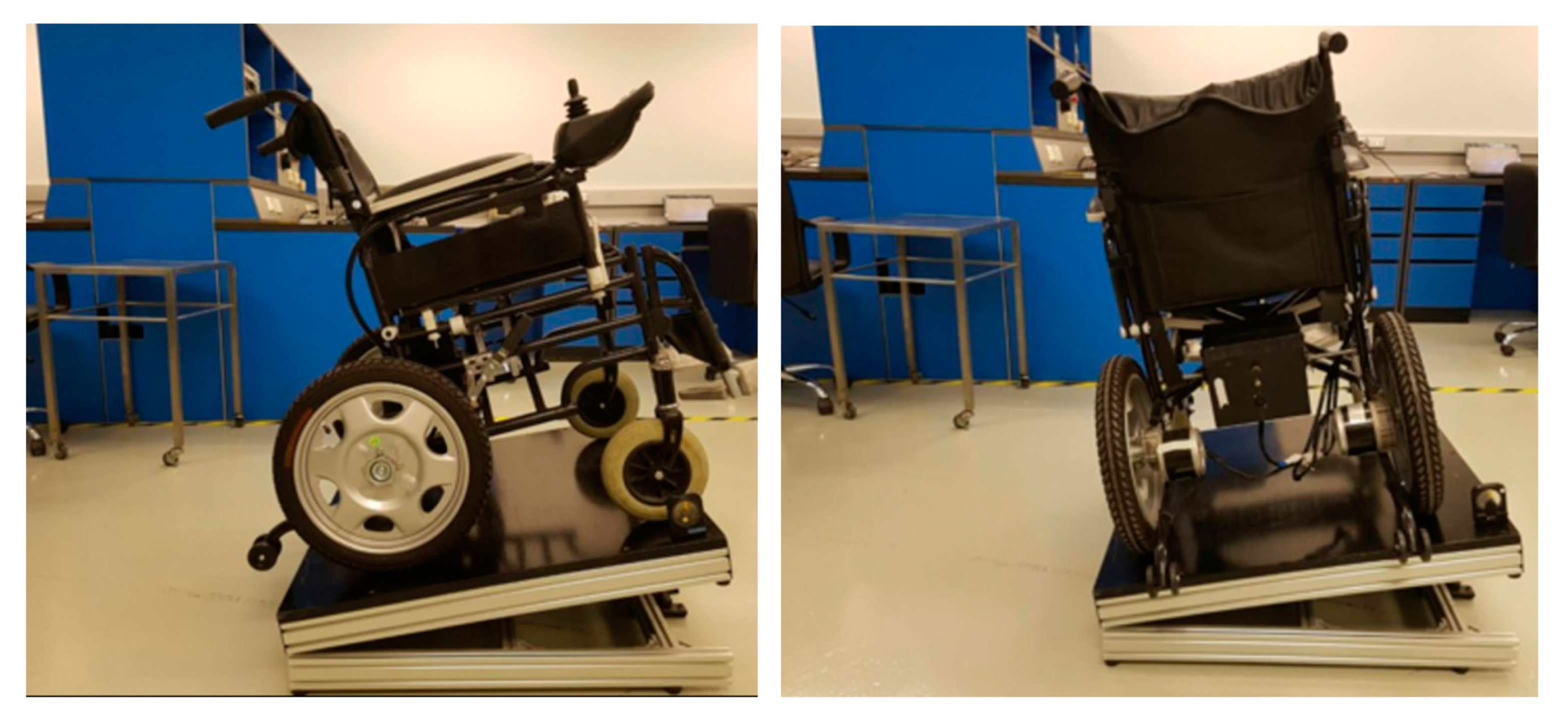


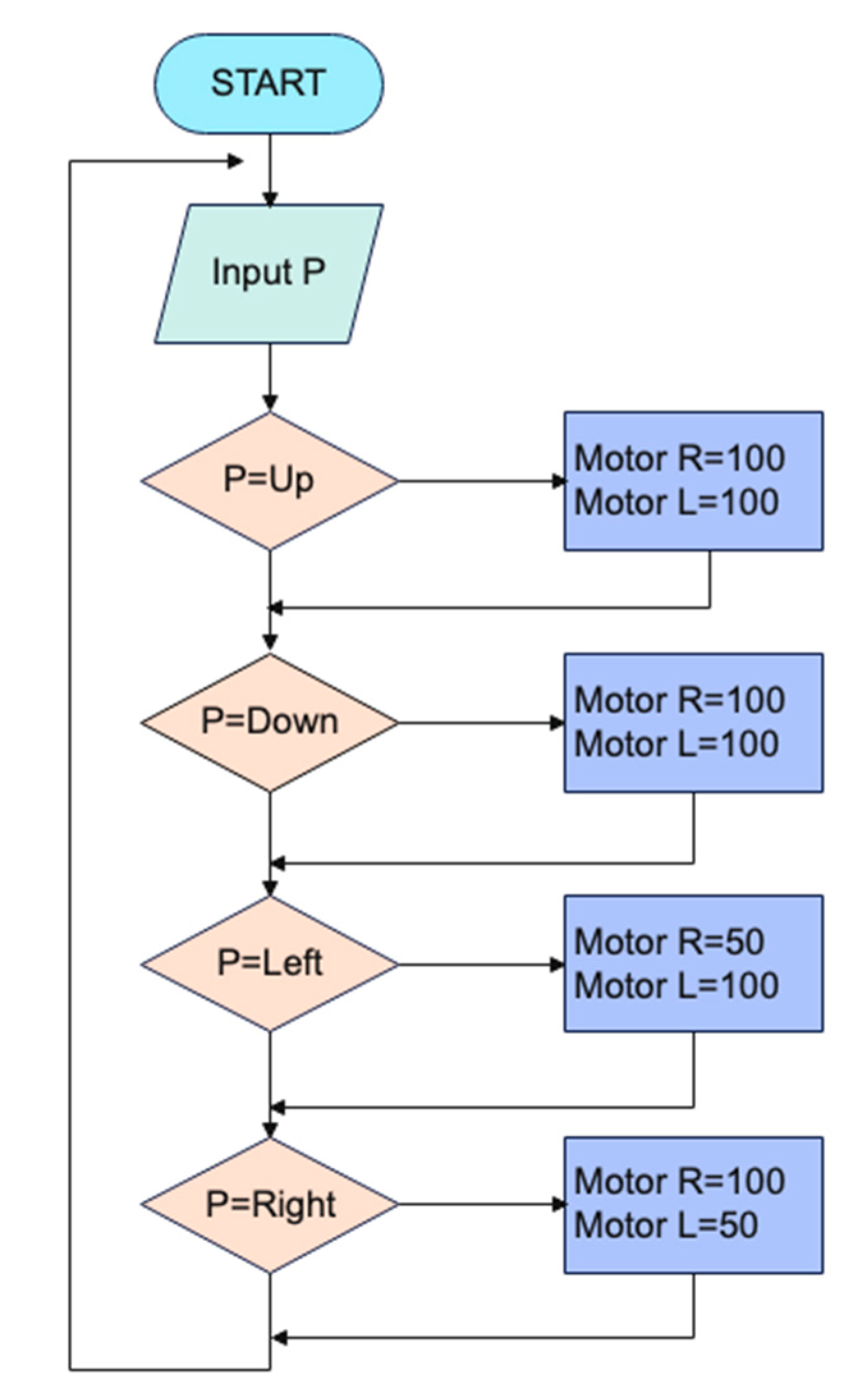

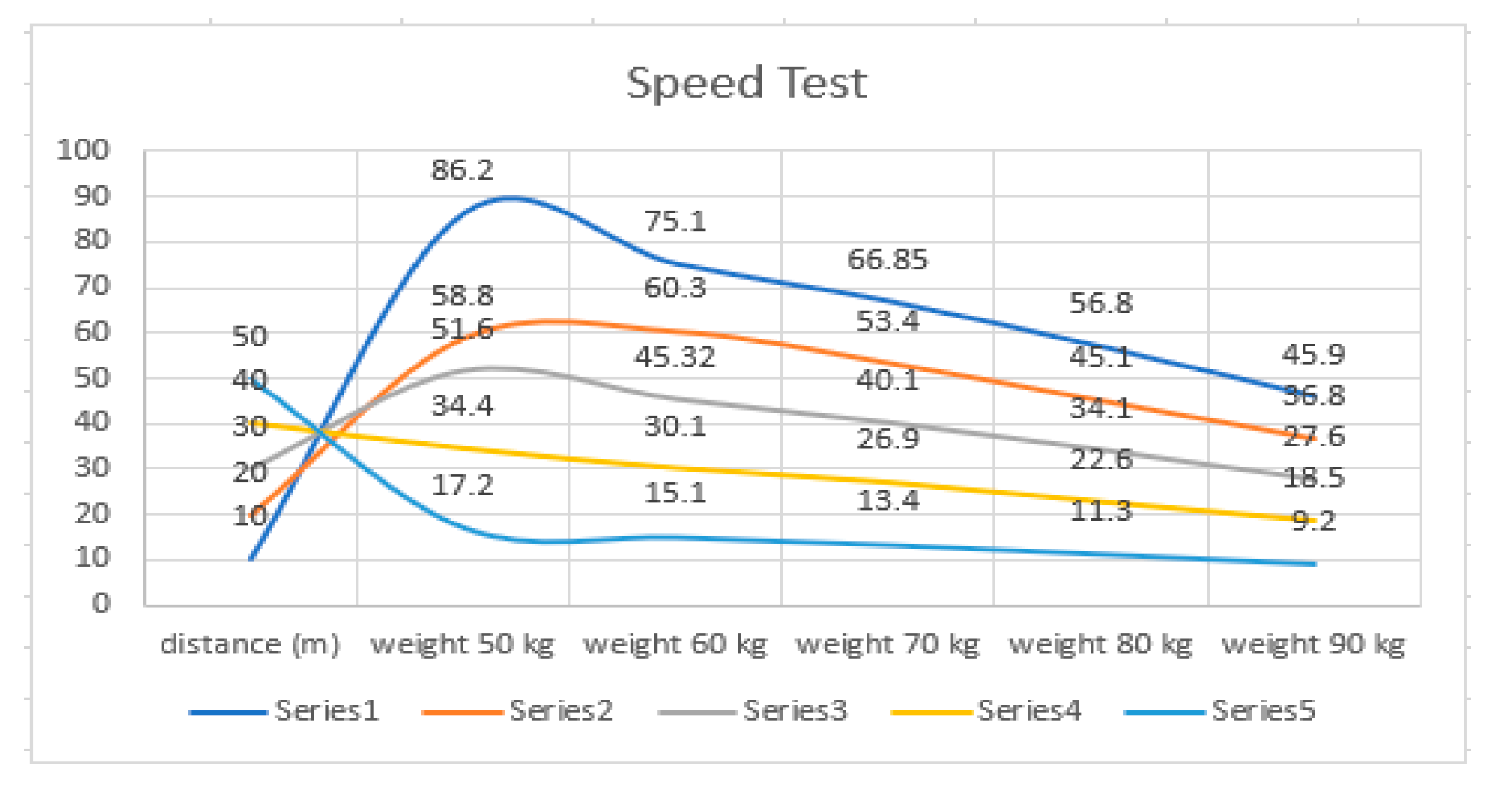



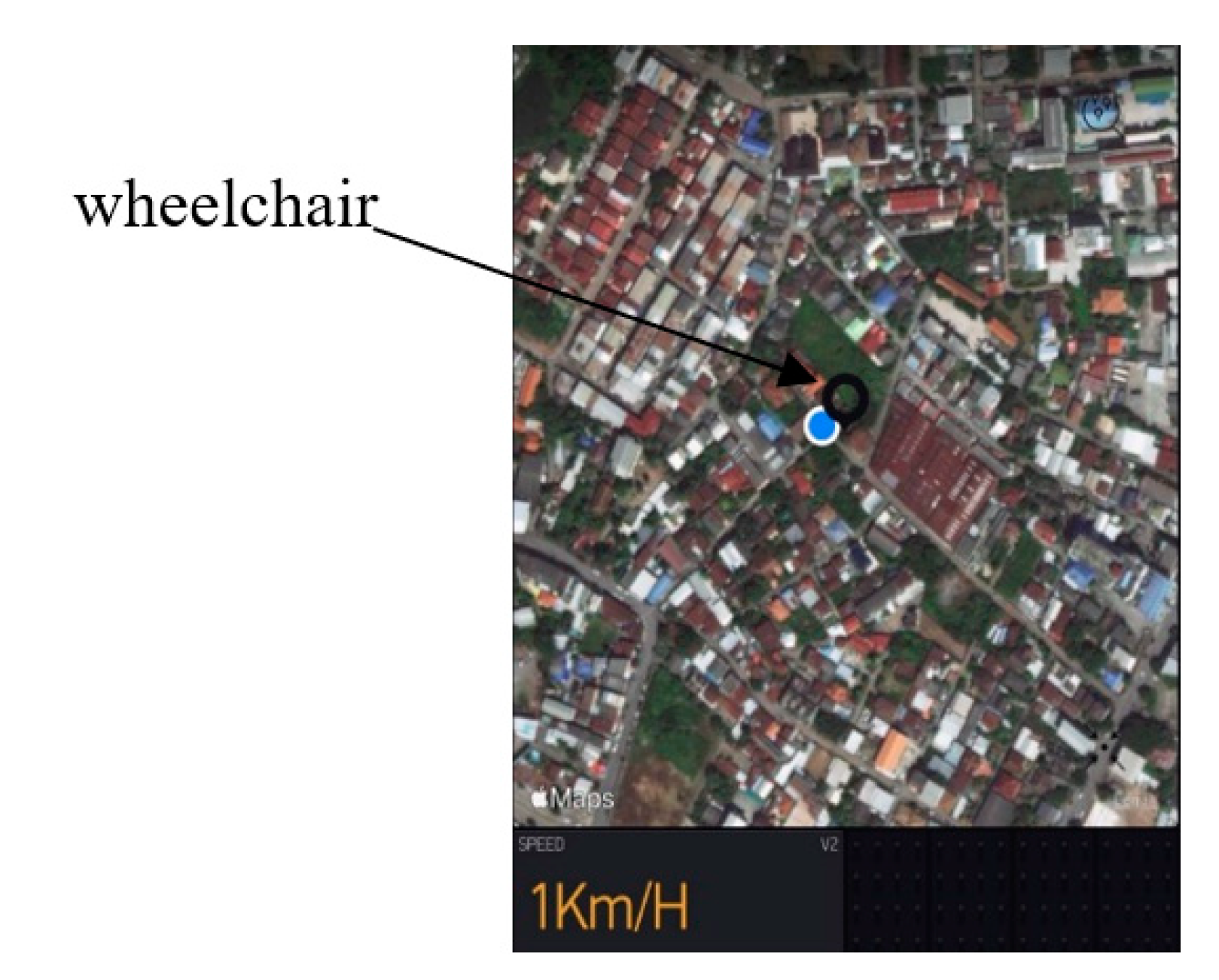
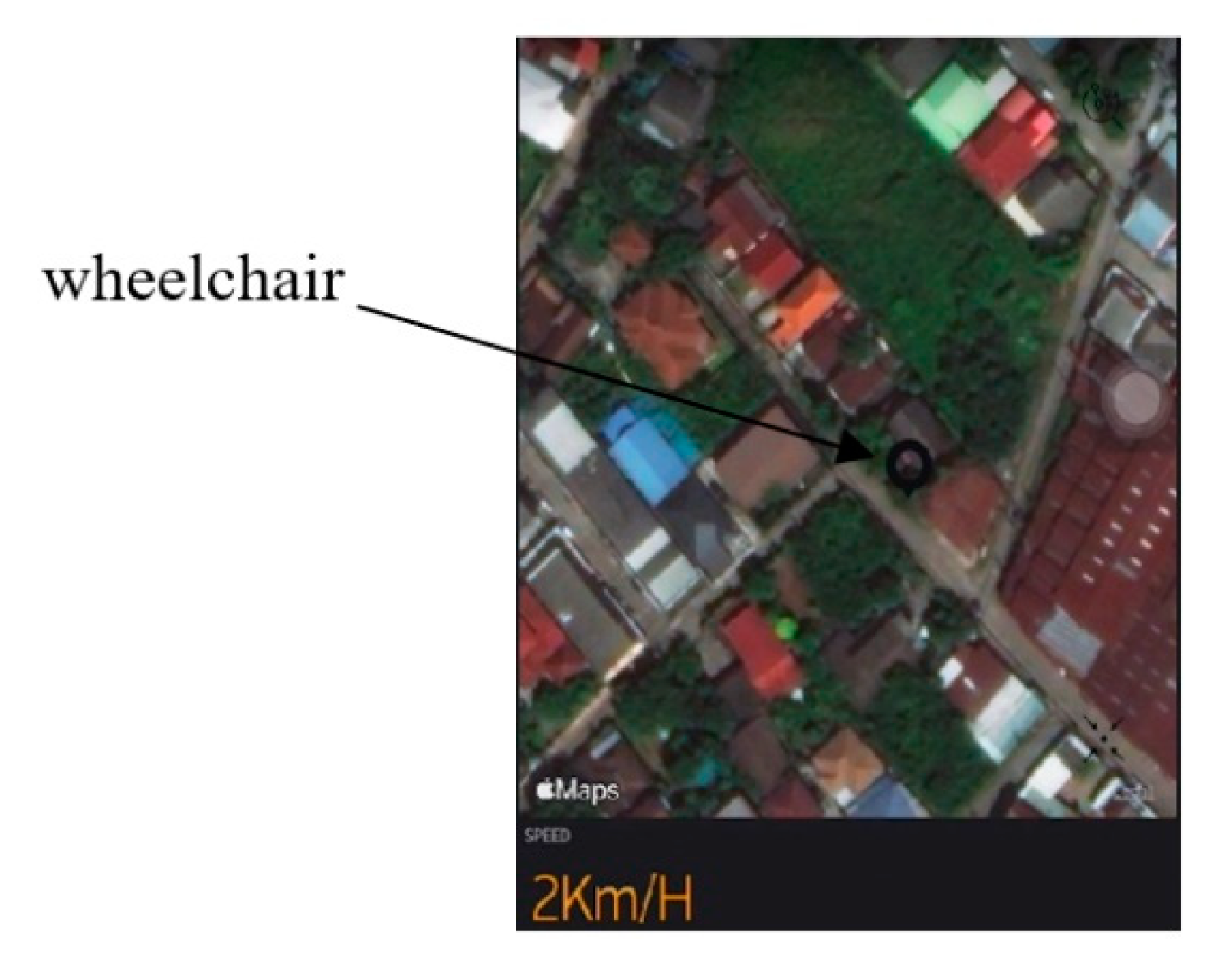

| Stage Name | Designing an Innovative Wheelchair Process |
|---|---|
| Problem identification and motivation | Through a thorough analysis of the approaches and objects to be identified, a search of the many positioning systems enabled us to examine the accuracy of various applications in both internal and external contexts, leading to the problem’s identification. The positioning error of the wheelchair results in a complete loss of information when driven in areas with weak internet or no Global Positioning System (GPS) signal. |
| Defining the goals of the solution | According to problem identification and motivation, it is possible to determine which policies to develop and research to minimize errors as much as possible, bearing in mind the external environment and autonomous movement. |
| Design and development | This resulted in the system’s architecture and aided in creating diagrams that could detail the many operations the system would carry out. The system’s implementation consisted of three components: a location system, an autonomous wheelchair system, and particular procedures that could optimize the entire program. |
| Demonstration | The smart antenna detects the path the smart wheelchair can take, compares it to the initial path chosen by the user, and displays the result on the graphical user interface. This demonstrates how the unique approach reduced the positioning error. |
| Evaluation | Three detection nodes are utilized in various positions to test the application quality and then consider whether the internal or external environment affects the accuracy of the system’s performance. |
| Distance (m) | Time | ||||
|---|---|---|---|---|---|
| Weight 50 kg | Weight 60 kg | Weight 70 kg | Weight 80 kg | Weight 90 kg | |
| 10 | 86.20 | 75.10 | 66.85 | 56.80 | 45.90 |
| 20 | 58.80 | 60.30 | 53.40 | 45.10 | 36.80 |
| 30 | 51.60 | 45.32 | 40.10 | 34.10 | 27.60 |
| 40 | 34.40 | 30.10 | 26.90 | 22.60 | 18.50 |
| 50 | 17.20 | 15.10 | 13.40 | 11.30 | 9.20 |
| Distance (m) | Time | ||||
|---|---|---|---|---|---|
| Weight 50 kg | Weight 60 kg | Weight 70 kg | Weight 80 kg | Weight 90 kg | |
| 10 | 127.60 | 100.50 | 86.60 | 72.50 | 62.90 |
| 20 | 102.90 | 80.80 | 69.40 | 58.60 | 50.90 |
| 30 | 77.50 | 60.30 | 51.90 | 48.80 | 38.40 |
| 40 | 51.10 | 40.60 | 34.60 | 29.40 | 25.60 |
| 50 | 25.90 | 20.40 | 17.40 | 14.50 | 12.80 |
| GPS Tracking | Item | Longitude | Latitude |
|---|---|---|---|
| 1 | assign | 100.61239 | 14.13312 |
| 100.61165 | 14.13331 | ||
| 100.611135 | 14.13311 | ||
| round1 | 100.613284 | 14.13312 | |
| 100.611705 | 14.13311 | ||
| 100.611128 | 14.13311 | ||
| round2 | 100.612386 | 14.13312 | |
| 100.611709 | 14.13311 | ||
| 100.61170 | 14.13311 | ||
| 2 | assign | 100.612343 | 14.13318 |
| 100.611196 | 14.13322 | ||
| 100.611165 | 14.13469 | ||
| round1 | 100.612316 | 14.13322 | |
| 100.611120 | 14.13307 | ||
| 100.611158 | 14.13384 | ||
| round2 | 100.612309 | 14.133126 | |
| 100.611180 | 14.133159 | ||
| 100.611150 | 14.133155 | ||
| 3 | assign | 100.611378 | 14.13434 |
| 100.612405 | 14.13432 | ||
| 100.612384 | 14.13312 | ||
| round1 | 100.613728 | 14.13432 | |
| 100.612397 | 14.13367 | ||
| 100.61323 | 14.13314 | ||
| round2 | 100.613808 | 14.133426 | |
| 100.612414 | 14.133164 | ||
| 100.612380 | 14.132457 |
Publisher’s Note: MDPI stays neutral with regard to jurisdictional claims in published maps and institutional affiliations. |
© 2022 by the authors. Licensee MDPI, Basel, Switzerland. This article is an open access article distributed under the terms and conditions of the Creative Commons Attribution (CC BY) license (https://creativecommons.org/licenses/by/4.0/).
Share and Cite
Muangmeesri, B.; Wisaeng, K. IoT-Based Discomfort Monitoring and a Precise Point Positioning Technique System for Smart Wheelchairs. Appl. Syst. Innov. 2022, 5, 103. https://doi.org/10.3390/asi5050103
Muangmeesri B, Wisaeng K. IoT-Based Discomfort Monitoring and a Precise Point Positioning Technique System for Smart Wheelchairs. Applied System Innovation. 2022; 5(5):103. https://doi.org/10.3390/asi5050103
Chicago/Turabian StyleMuangmeesri, Benchalak, and Kittipol Wisaeng. 2022. "IoT-Based Discomfort Monitoring and a Precise Point Positioning Technique System for Smart Wheelchairs" Applied System Innovation 5, no. 5: 103. https://doi.org/10.3390/asi5050103
APA StyleMuangmeesri, B., & Wisaeng, K. (2022). IoT-Based Discomfort Monitoring and a Precise Point Positioning Technique System for Smart Wheelchairs. Applied System Innovation, 5(5), 103. https://doi.org/10.3390/asi5050103






